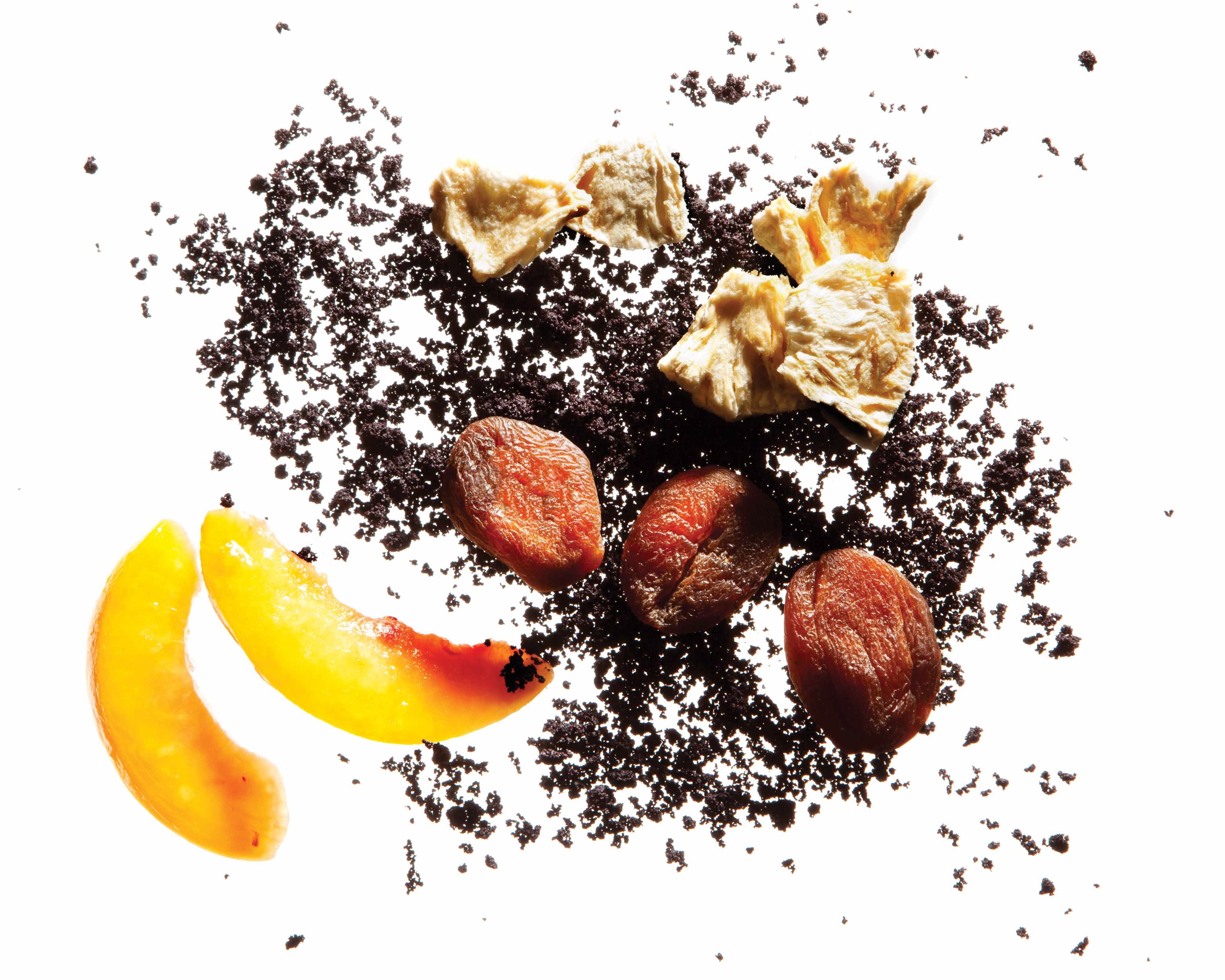Eat Right: Enjoy Fruits Year-Round

Photo: Sue Fan & John David Becker
Learn how to enjoy the flavors—and health perks—of your favorite fruits year-round.
It’s hard to beat biting into a juicy peach or an impossibly sweet blueberry during the summer. But long after the fresh local fruits are gone, don’t rely solely on mealy South American peaches or lackluster raspberries from who-knows-where. During the heart of winter, embrace their nutritious frozen and dried counterparts to get your fix. The increasing varieties available, such as freeze-dried strawberries and frozen cherries, are brimming with the nutrients needed to support your winter training program.
Fruit powders
When freeze-dried fruits are pulverized, you are left with antioxidant-loaded fruit powder. Made often using so-called “superfruits” like acai, goji and pomegranate, fruit powders can be pricey, but a little goes a long way.
Sneak more in: Blend into smoothies or use the powders to bring exotic flavor to pancakes, yogurt, cottage cheese, salad dressing and whipped cream.
Best buy: Navitas Naturals (Navitasnaturals.com) acai, goldenberry or goji.
Frozen fruits
Out-of-season fruits can lose a considerable amount of their nutrients, including vitamin C, during shipping and storage. In contrast, frozen peaches, blueberries, cherries and other fruits are harvested at peak ripeness when they are more nutrient-dense and quickly flash-frozen—which locks in their vitamins, antioxidants and flavor. Best of all, many come conveniently peeled, pitted and sliced.
Sneak more in: Frozen fruits make deliciously creamy and frothy post-exercise smoothies. Consider stirring frosty wild blueberries and mango cubes into oatmeal as it cooks.
Best buy: Cascadian Farm (Cascadianfarm.com) organic frozen blackberries, blueberries and peaches.
Dried fruits
Dried fruits are sweet packages of nutrition, as removing water from fresh fruit not only concentrates the flavors, but also many of the nutrients. Ounce for ounce, dried apricots have twice as much fiber and beta-carotene as fresh ones. Dried plums (prunes) contain 10 times as much vitamin K as the fresh plums from which they originate. And parched figs pack in five times more bone-building calcium and more than twice the potassium as fresh versions. Removing moisture also makes dried tart cherries particularly concentrated in inflammation-quelling anthocyanin antioxidants. Some dried fruits are sweetened further with added sugars, so choose unsweetened versions when possible.
Sneak more in: Mix dried fruit into oatmeal, granola, cooked grains, yogurt, tuna salad, and DIY energy bars for a shot of sweetness. Or simmer options like pitted dates or dried plums in water to soften, purée in a food processor and then incorporate into baked-good batters in place of refined sugars.
Best buy: Made In Nature (Madeinnature.com) dried apricots, plums and figs.
Freeze-dried fruits
The freeze-drying process involves flash-freezing fruits shortly after harvest and then removing moisture using very low temperatures and a vacuum, leaving behind a shelf-stable, crunchy product. Research suggests this process has little impact on nutritional values, making freeze-dried fruits a healthy, portable snack for adults and kids (and not just astronauts). Only choose those with no added sugars.
Sneak more in: Enjoy straight from the bag or mix freeze-dried fruit into trail mix, baked goods, yogurt, salads, homemade granola or a bowl of cereal and milk.
Best buy: Crispy Green (Crispygreen.com) freeze-dried mango, cantaloupe and pineapple.
RELATED – TriathlEats: Orzo And Wild Rice With Dried Fruit
Get the latest in triathlon training, gear, nutrition and news sent straight to your inbox. Sign up for Triathlete’s newsletter.